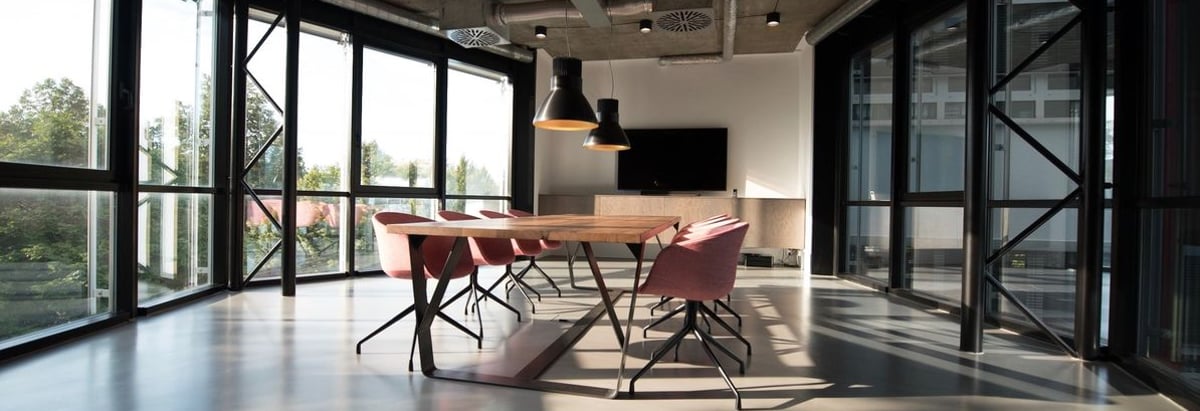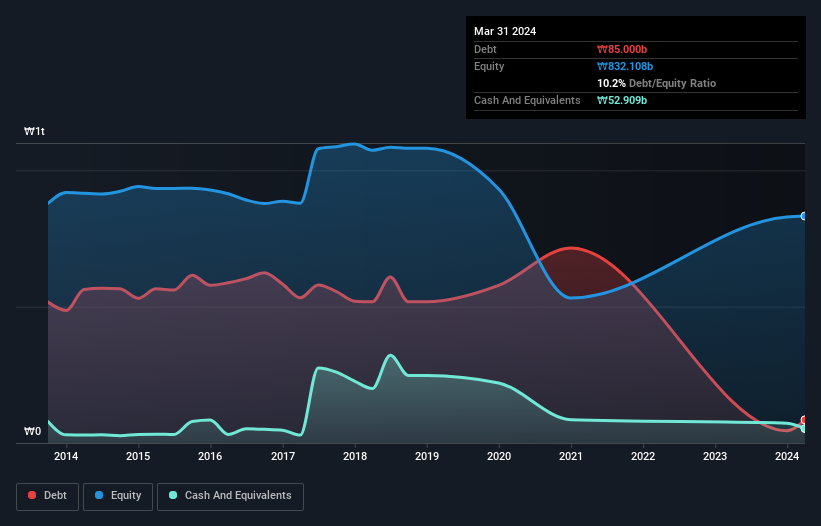- South Korea
- /
- General Merchandise and Department Stores
- /
- KOSE:A452260
Is Hanwha Galleria (KRX:452260) Using Too Much Debt?

Some say volatility, rather than debt, is the best way to think about risk as an investor, but Warren Buffett famously said that 'Volatility is far from synonymous with risk.' So it might be obvious that you need to consider debt, when you think about how risky any given stock is, because too much debt can sink a company. We can see that Hanwha Galleria Co., Ltd. (KRX:452260) does use debt in its business. But should shareholders be worried about its use of debt?
Why Does Debt Bring Risk?
Debt and other liabilities become risky for a business when it cannot easily fulfill those obligations, either with free cash flow or by raising capital at an attractive price. Part and parcel of capitalism is the process of 'creative destruction' where failed businesses are mercilessly liquidated by their bankers. However, a more common (but still painful) scenario is that it has to raise new equity capital at a low price, thus permanently diluting shareholders. By replacing dilution, though, debt can be an extremely good tool for businesses that need capital to invest in growth at high rates of return. The first thing to do when considering how much debt a business uses is to look at its cash and debt together.
See our latest analysis for Hanwha Galleria
What Is Hanwha Galleria's Net Debt?
As you can see below, at the end of March 2024, Hanwha Galleria had ₩85.0b of debt, up from ₩45.0b a year ago. Click the image for more detail. However, it also had ₩52.9b in cash, and so its net debt is ₩32.1b.

How Strong Is Hanwha Galleria's Balance Sheet?
According to the last reported balance sheet, Hanwha Galleria had liabilities of ₩563.1b due within 12 months, and liabilities of ₩444.0b due beyond 12 months. On the other hand, it had cash of ₩52.9b and ₩240.4b worth of receivables due within a year. So it has liabilities totalling ₩713.8b more than its cash and near-term receivables, combined.
This deficit casts a shadow over the ₩238.4b company, like a colossus towering over mere mortals. So we definitely think shareholders need to watch this one closely. After all, Hanwha Galleria would likely require a major re-capitalisation if it had to pay its creditors today.
In order to size up a company's debt relative to its earnings, we calculate its net debt divided by its earnings before interest, tax, depreciation, and amortization (EBITDA) and its earnings before interest and tax (EBIT) divided by its interest expense (its interest cover). This way, we consider both the absolute quantum of the debt, as well as the interest rates paid on it.
Given net debt is only 0.30 times EBITDA, it is initially surprising to see that Hanwha Galleria's EBIT has low interest coverage of 0.75 times. So one way or the other, it's clear the debt levels are not trivial. Importantly, Hanwha Galleria grew its EBIT by 84% over the last twelve months, and that growth will make it easier to handle its debt. When analysing debt levels, the balance sheet is the obvious place to start. But you can't view debt in total isolation; since Hanwha Galleria will need earnings to service that debt. So when considering debt, it's definitely worth looking at the earnings trend. Click here for an interactive snapshot.
Finally, a company can only pay off debt with cold hard cash, not accounting profits. So it's worth checking how much of that EBIT is backed by free cash flow. During the last three years, Hanwha Galleria burned a lot of cash. While that may be a result of expenditure for growth, it does make the debt far more risky.
Our View
On the face of it, Hanwha Galleria's conversion of EBIT to free cash flow left us tentative about the stock, and its level of total liabilities was no more enticing than the one empty restaurant on the busiest night of the year. But at least it's pretty decent at growing its EBIT; that's encouraging. We're quite clear that we consider Hanwha Galleria to be really rather risky, as a result of its balance sheet health. So we're almost as wary of this stock as a hungry kitten is about falling into its owner's fish pond: once bitten, twice shy, as they say. There's no doubt that we learn most about debt from the balance sheet. However, not all investment risk resides within the balance sheet - far from it. To that end, you should be aware of the 1 warning sign we've spotted with Hanwha Galleria .
If, after all that, you're more interested in a fast growing company with a rock-solid balance sheet, then check out our list of net cash growth stocks without delay.
Valuation is complex, but we're here to simplify it.
Discover if Hanwha Galleria might be undervalued or overvalued with our detailed analysis, featuring fair value estimates, potential risks, dividends, insider trades, and its financial condition.
Access Free AnalysisHave feedback on this article? Concerned about the content? Get in touch with us directly. Alternatively, email editorial-team (at) simplywallst.com.
This article by Simply Wall St is general in nature. We provide commentary based on historical data and analyst forecasts only using an unbiased methodology and our articles are not intended to be financial advice. It does not constitute a recommendation to buy or sell any stock, and does not take account of your objectives, or your financial situation. We aim to bring you long-term focused analysis driven by fundamental data. Note that our analysis may not factor in the latest price-sensitive company announcements or qualitative material. Simply Wall St has no position in any stocks mentioned.
About KOSE:A452260
Mediocre balance sheet and slightly overvalued.
Market Insights
Community Narratives



